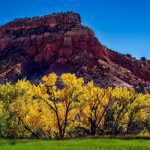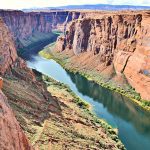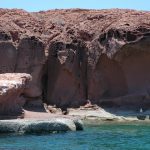The Biden-Harris Administration has announced investments exceeding $36 million in close to 100 projects aimed at enhancing water quality, roads, trails, bridges, and fish habitats on national forests and grasslands throughout the United States. These investments are part of President Biden’s Investing in America agenda and the Administration’s efforts to develop a clean energy economy while fostering economic opportunities for communities nationwide.
Funded by the Bipartisan Infrastructure Law, these investments enable the U.S. Department of Agriculture’s Forest Service to deliver crucial resources through the Legacy Roads and Trails Program . The program, supporting 98 projects in fiscal year 2023, works in conjunction with other restoration and infrastructure initiatives to enhance water quality and aquatic habitats, while ensuring safer, more sustainable, and durable transportation systems.
. The program, supporting 98 projects in fiscal year 2023, works in conjunction with other restoration and infrastructure initiatives to enhance water quality and aquatic habitats, while ensuring safer, more sustainable, and durable transportation systems.
The Legacy Roads and Trails Remediation Program restores, protects, and maintains crucial watersheds on our national forests and grasslands. This is accomplished by restoring fish and aquatic organism passage, improving road and trail resiliency, preserving access, and decommissioning unneeded roads as determined by transportation planning. Protecting threatened, endangered, and sensitive species, and community water sources are among the top priorities for projects that improve and maintain access. Emergency operations that rely upon evacuation routes during wildfires, floods or other natural disasters also benefit from this program.
Besides upgrading roads and trails for communities, businesses, and visitors, the program generates employment in fields such as stream restoration, environmental design, and heavy equipment operations. Agriculture Secretary Tom Vilsack emphasized the impact of the Bipartisan Infrastructure Law on the lives of Americans



One such project supported by the Legacy Roads and Trails Program is the recently completed Little Gold Creek project in southwest Montana’s Beaverhead-Deerlodge National Forest. By replacing a narrow culvert with a larger, flood-resistant design, the project offers uninterrupted passage for fish and other aquatic species, including the endangered bull trout, which is affected by climate change. Projects like this improve infrastructure durability, protect water quality, and ensure public access by preventing roads from flooding and washing out, while also enhancing safety for visitors and nearby communities.
Projects in the Colorado River Basin states for fiscal year 2023



Arizona.
- Apache-Sitgreaves National Forest:
- National Forest System Road 116: Road improvements including drainage features and resurfacing. Project will improve water quality by reducing sediment runoff, improve road resilience and maintain future access to adjacent areas for public, contractors, permittees, and firefighters.
- Coconino National Forest:
- Museum Fire and Mount Elden Dry Lakes Trail: Decommission unauthorized and previously closed trails, relocate or reconstruct sections of National Forest System trails, and convert roads to trails. Project will improve trail resilience and maintain future access to adjacent areas for public, contractors, permittees, and firefighters.
- Parker Lake Access Road: Replacement of undersized culverts that restrict flow and fish passage with new drainage structure. Project will restore fish passage, improve water quality in source water protection area, improve road resilience, and maintain future access to adjacent areas for public, contractors, permittees, and firefighters.
- Tonto National Forest:
- Green Valley and East Verde Watersheds: Decommission unneeded and previously closed roads. This project will improve watershed health by lowering road densities and decreasing the proximity of roads to surface water, which will reduce sediment transport and delivery to stream bodies.
- National Forest System Road 289 Bridge Replacement – Phase I (Environmental Clearance/Design): Design and environmental analysis process for bridge replacement on National Forest System road. Project will improve water quality in a public drinking water source area, improve road resilience, and maintain future access to adjacent areas for public, contractors, permittees, and firefighters.
California.
- Cleveland National Forest.
- Trabuco Canyon: Construction of two aquatic organism passages. Project will restore fish habitat for steelhead trout, improve road resilience, and maintain future access to adjacent areas for public, contractors, permittees, and firefighters.
Colorado.
- Pike and San Isabel National Forests.
- Bear Creek: Continuation of FY22 project, this project will continue implementation of decommissioning 11 miles of unauthorized trails. Project will improve water quality and restore habitat for greenback cutthroat trout.
- Travel Management Plan Implementation – Road Decommissioning and Trail Conversion: Decommission 50 miles of roads and convert 25 miles of roads to trails. Project will restore habitat, improve water quality, and maintain future access to adjacent areas for public, contractors, permittees, and firefighters.
- San Juan National Forest.
- Hermosa Aquatic Organism Passage: Continuation of FY22 project, this project will implement construction of an aquatic organism passage that will remove a low water crossing on the road. Project will restore habitat and maintain future access to adjacent areas for public, contractors, permittees, and firefighters.
- White River National Forest.
- Wearyman Watershed Improvement Project: Continuation of FY22 project, this project will implement hydraulically separating road and stream, improving stream and riparian function, and reducing/eliminating erosion and sedimentation. Project will improve water quality, restore habitat for greenback cutthroat trout, and maintain future access to adjacent areas for public, contractors, permittees, and firefighters.
Nevada.
- Humboldt-Toiyabe National Forest.
- Harrison Pass Stormproofing: Decommission approximately one mile of unauthorized road and install drainage improvements on a National Forest System road within a priority watershed. Project will improve road resilience and maintain future access to adjacent areas for public, contractors, permittees, and firefighters.
New Mexico.
- Carson National Forest.
- Canjilon Lakes Campground Road: Road improvements including subgrade reconstruction and repaving on a National Forest System road. Project will improve water quality by reducing sediment, improve habitat in source water protection area, and maintain future access to adjacent high-elevation lake areas for public, contractors, permittees, and firefighters.
- La Jara Creek Traffic & Recreation Use Mitigation: Installation of roadside traffic control features to eliminate unauthorized vehicle access within sensitive riparian area. Project will improve water quality and restore fish and aquatic species habitat.
- Valle Vidal Aquatic Organism Passage Culverts: Construction of four aquatic organism passage structures on a National Forest System road, working with State of New Mexico and US Fish and Wildlife Service. Project will connect approximately eight miles of upstream fish habitat, improve road resilience, and maintain future access to adjacent areas for public, contractors, permittees, and firefighters.
- Cibola National Forest.
- National Forest System Road 157: Road drainage improvements and installation of erosion control features in priority watershed. Project will improve road resilience, and maintain future access to adjacent areas for public, contractors, permittees, and firefighters.
- Gila National Forest.
- National Forest System Trail 616/Tularosa River Walk in the Past Trail: Replace bridge on National Forest System trail. Project will improve trail resilience, restore critical habitat for threatened and endangered fish and aquatic species, improve water quality, and maintain future access to adjacent areas for public, contractors, permittees, and firefighters.
- Santa Fe National Forest.
- National Forest System Road 7: Road improvements replacing undersized culverts and installation of erosion control measures. Project will restore habitat, improve road resilience, and maintain future access to adjacent areas for public, contractors, permittees, and firefighters.
- Upper Rio Cebolla Aquatic Organism Passages: Replacement of undersized culverts that are currently a barrier to upstream fish passage. Project will restore upstream habitat, improve road resilience, and maintain future access to adjacent areas for public, contractors, permittees, and firefighters.
Utah.
- Ashley National Forest.
- Rock Creek/Lake Fork/Moon Lake Roads/Road Bridges: Road and bridge repair and improvement, and landslide mitigation on National Forest System roads within a priority watershed. Project will improve road resilience and maintain future access to adjacent areas for public, contractors, permittees, and firefighters.
- Fishlake National Forest.
- Britts Meadow Road & Bridge: Relocate National Forest System road and associated bridge. Project will improve road resilience to extreme weather events and maintain future access to adjacent areas for public, contractors, permittees, and firefighters.
- Manti-La Sal National Forest.
- Trail Pinch Points: Trail improvements on National Forest System trails. Project will improve trail resilience and maintain future access to adjacent areas for public, contractors, permittees, and firefighters.
- Roads Restoration Xfire – Skyline Drive: Road improvement including drainage structures and aggregate surfacing on National Forest System road. Project will improve resiliency to extreme weather events and maintain future access to adjacent areas for public, contractors, permittees, and firefighters.
- R4 Intermountain Region.
- R4 Legacy Road and Trail Aquatic Organism Passage Program: Design and construction of aquatic organism passages. Project will remove existing fish and aquatic species barriers, restore habitat, improve road resilience, and maintain future access to adjacent areas for public, contractors, permittees, and firefighters.
Wyoming.
- Bighorn National Forest.
- Canyon Creek Road and Channel Improvements: Continuation of FY22 project, this project will implement reconstruction/relocation of approximately 600’ of road and construction of bridge to an area where the stream crossing is stable. Project will reduce erosion, restore habitat, and maintain future access to adjacent areas for public, contractors, permittees, and firefighters.
- Eastside Access Trail Improvements: Trail improvements on National Forest System trails. Project will restore habitat, improve water quality, and maintain future access to adjacent areas for public, contractors, permittees, and firefighters.
- Medicine Bow-Routt National Forest.
- Middle Douglas Priority Watershed Restoration Action Plan Essential Projects: Continuation of FY22 project, this project will implement construction of two aquatic organism passages, decommission five miles of previously closed roads and five miles of unauthorized roads, place approximately 30 miles of road into long term storage, and relocate approximately 17 miles of motorized trail. Project will improve water quality and maintain future access to adjacent areas for public, contractors, permittees, and firefighters.
- Whiskey Creek – Little Snake Watershed Restoration Action Plan Essential Projects: Continuation of FY22 project, this project will implement construction of an aquatic organism passage, approximately ten miles of road storage and road decommission, and five miles of road-trail conversions, road re-routes, and unauthorized road obliteration. Project will restore fish and aquatic species habitat, improve road resilience, and maintain future access to adjacent areas for public, contractors, permittees, and firefighters.
- Shoshone National Forest.
- Storm Damage Risk Reduction, Sediment Reduction and Aquatic Organism Connectivity: Decommission roads and user created routes, implement long-term storage of roads and route relocation within a priority watershed. Project will restore habitat, improve water quality, and maintain future access to adjacent areas for public, contractors, permittees, and firefighters.
The Forest Service oversees more than 160,000 miles of trails, 6,700 road bridges, 7,200 trail bridges, and 370,000 miles of roads across diverse ecological settings and landscapes. Around 80 million people rely on drinking water that originates from or flows through national forests and grasslands. The improvements announced will boost ecological connectivity and watershed health, protect infrastructure, and guarantee the continued provision of drinking water to communities.






Leave a Reply